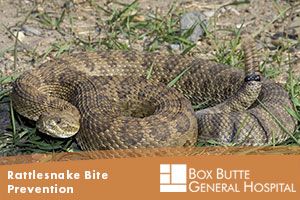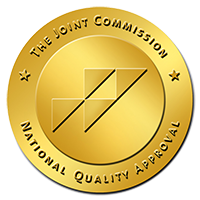Rattlesnake Bite Prevention
- Never handle poisonous snakes, even if you think they are dead. They can still bite you and inject venom.
- Be attentive outdoors. Nebraska’s poisonous snakes are naturally camouflaged.
- When stepping or climbing over rocks or trees be cautious where you place your hands and feet. Wear high boots and loose pants.
- Stay on trails when hiking.
- Be cautious around wood and debris piles. Eliminate similar places at home where snakes can hide.
- Eliminate bird feeders. The seeds attract rodents, which attract snakes.
- When camping with a tent, use one with a floor and a zippered door. Camp in areas with short grass and areas that don’t have places for snakes to take cover or hide.
Rattle snake identification (see photo above):
- A triangular head distinctly wider than the neck.
- A small pit on each side of the head between and slightly below the eye and nostril. This small pit, which looks somewhat like another nostril, is heat sensitive and helps the snake locate warm-bodied prey such as mice. Snakes with this pit are called pit vipers and all of Nebraska's poisonous snakes are in this group.
- A warning rattle, a buzz or dry whirring sound. Rattlesnakes usually, but not always, sound a warning rattle when nearby.
- In daylight, Elliptical (cat-like) eye pupils (the black center portion of the eye). Nebraska's nonpoisonous snakes have round eye pupils.
Ron J. Johnson, Extension Wildlife Specialist
If you encounter a rattlesnake, you should:
- Stop where you are until you are sure where the snake is.
- Back away slowly.
- Keep a safe distance from the snake. (At least your own body length.)
What to do if bitten by a rattle snake:
- Remain calm. It is rare that a person dies from a rattle snake bite.
- Avoid additional snake bites, (get to a safe location).
- Call 911
- Do not delay transport to the closest emergency department.
- Remove tight fitting clothing or jewelry before swelling starts.
- Move as little as possible. This will help limit the spread of venom through the body.
- Immobilize the bitten area and keep it at the same level as the heart.
- Do not attempt to “suck” the venom from the wound.
- Do not try to cut around the fang marks and suck out the venom. People who do this often cause more damage than good.
- DO NOT apply a tourniquet to the bitten extremity.
- Do not apply ice to wound.
- Do not try to capture the snake.



